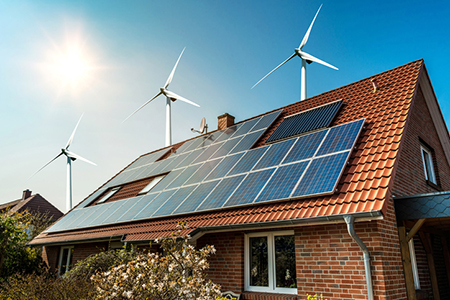The following information is provided by the Center for REALTOR® Development (CRD).
In addition to the obvious benefits to the triple bottom line—people, planet, profit—below are 10 aspects of today’s world intended to help real estate professionals understand that green real estate (also known as efficient, high-performance or sustainable) is the new normal, and has reached its tipping point for awareness, adoption and market penetration.
1. Today’s daily life is replete with messages about environmental responsibility, from ubiquitous recycling containers to continuous advertising for “all-natural” products and media reports of high-profile environmental disasters.
2. The millennial generation is redefining what it means to live an environmentally conscious life. Surveys show the majority of millennials don’t even think of themselves as environmentalists—the traditional definition is too narrow for them. Millennials incorporate green choices into their way of life. It’s not what they do—it’s who they are.
3. Walkability, car-optional transportation, affordability and placemaking have become key market drivers in real estate. Communities that already have good walkability and public transit can build on these assets to attract high-income, well-educated residents, and the businesses that serve them.
4. Nearly every municipality and state in the country has adopted minimum energy-efficiency standards, which gradually raise the bar for compliance. Furthermore, many building codes now may require replacement of old materials and systems with newer, more resource-efficient parts and materials.
5. Cash grants, rebates and tax deductions provide a strong incentive, as well as ease the cost of upgrades. The Database for State Incentives for Renewable Energy (DSIRE) is the most comprehensive source of information on incentives and policies that support renewable energy and energy efficiency.
6. The market edge provided by certified homes is now a powerful incentive. Three major national certifications dominate in home certifications: Energy Star®, Leadership in Energy and Environmental Design (LEED), and the National Green Building Standard (NGBS) of the Home Research Innovation Labs.
7. High-performance homes sell at a premium and help reduce mortgage risk. In a two recent studies, the Institute for Market Transformation found that high-performance homes (HPHs) sold at a 3.46 percent premium and mortgage defaults were 32 percent lower.
8. The rapid convergence of technologies that has become part of everyday life includes mobile phones and tablets, downloadable apps, embedded sensors and Wi-Fi internet connectivity. Smart home technology is now widely available, affordable and usable by the majority of the population. These technologies yield valuable data which can be analyzed and used to improve home performance for cost savings and improved resource usage—and are evolving at warp speed.
9. According to 2017 predictions by market researchers at Frost & Sullivan, the global homes and buildings industry is undergoing an intense evolution. “Transformational technologies such asthe internet of things (IoT), big data, data analytics and thecloud are propelling double-digit growth and market expansion.” Data collection and process improvements from these efforts have a multitude of applications for improvements in water efficiency, heating and cooling, security, overall facilities management, and even healthcare.
10. In a move driven by the wishes of its members, in the fall of 2016, the National Association of REALTORS® (NAR) created a Sustainability Program designed to position NAR as a leader in the conversation about sustainability in real estate for REALTORS®, brokers, allied trade associations and consumers.
For more education about green homes and sustainability, check out this month’s featured designation online course bundle at the Center for REALTOR® Development, NAR’s Green Designation: Day 1 & 2 Online Bundle, which is on special for 25% off this entire month of April and is the educational requirement for NAR’s Green Designation.
For more information, please visit RISMedia’s online learning portal from NAR’s Center for REALTOR® Development (CRD) and the Learning Library. Here, real estate professionals can sign up for online professional development courses, industry designations, certifications, CE credits, Code of Ethics programs and more. NAR’s CRD also offers monthly specials and important education updates. New users will need to register for an account.
For the latest real estate news and trends, bookmark RISMedia.com.











